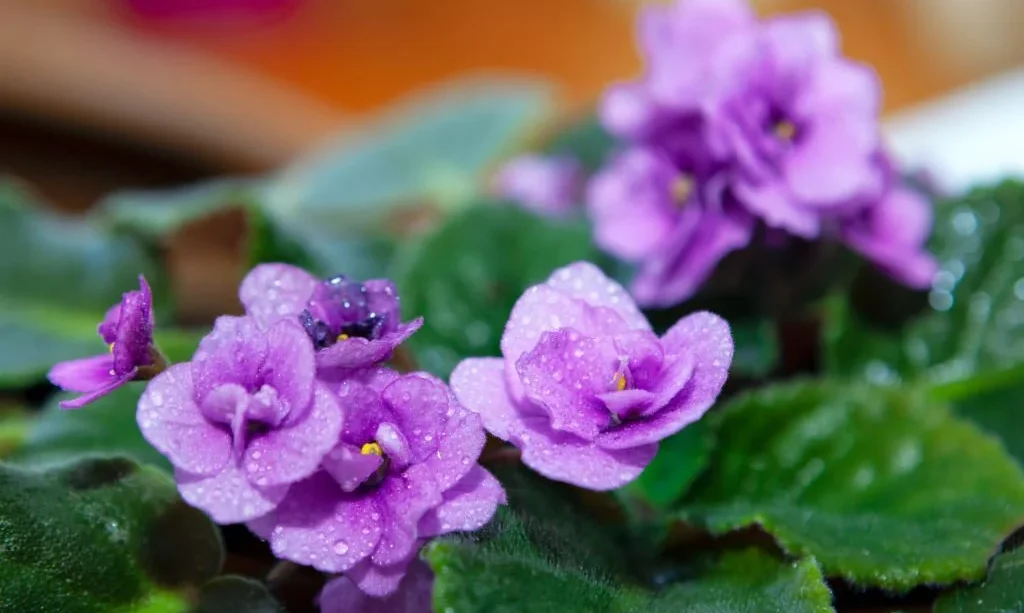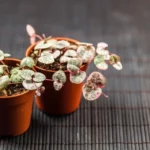Are you enchanted by the delicate beauty of African violets? These charming plants are known for their vibrant flowers and velvety leaves, but they also have specific watering requirements to keep them healthy and thriving. In this simple guide, we’ll explore the watering needs of African violets and provide you with the knowledge you need to give them just the right amount of water.
- For African Violets and other blooming plants
- Promotes beautiful blooms
- Just 7 drops of water every time you water
- 8-14-9 Formula
- Famous 7 Drops formula – Just 7 drops per quart of water for beautiful plants
African Violets’ Watering Needs
African violets naturally grow in environments with high humidity and well-drained soil. Understanding their watering needs is crucial for their overall well-being. Here are a few key points to keep in mind:
- Delicate Roots: African violets have delicate, fine roots that are sensitive to excessive moisture. They need the right balance of moisture to thrive.
- Consistent Moisture: African violets prefer slightly moist soil but not soggy or waterlogged conditions. They appreciate consistent moisture to sustain their growth and blooming.
By understanding the unique watering needs of African violets, you can ensure they receive the right amount of water for their optimal growth.
In the following sections, we’ll explore the factors that affect watering frequency and provide general guidelines to help you determine how often to water your African violets. Let’s dive into the world of African violet watering!
Factors Affecting Watering Frequency
Several factors influence the watering frequency for African violets. By considering these factors, you can determine how often to water your plants. Here are a few key factors to keep in mind:
- Temperature and Humidity: Warmer temperatures and lower humidity levels may result in faster evaporation and increased watering needs. Consider the environmental conditions in your home or growing area.
- Pot Size and Soil Type: Smaller pots and well-drained soil tend to dry out more quickly, requiring more frequent watering. Larger pots and soil with good moisture-retention properties may require less frequent watering.
- Plant Size and Stage: The size and stage of your African violets can also influence their watering needs. Larger plants with more foliage may require more water, while smaller plants or newly potted ones may need less.
- Blended for the specific needs of African Violets
- Feeds up to 6 months
- Grows big blossoms with brilliant color
- Use when potting or repotting indoor or outdoor container plants
- Use with Miracle-Gro Blooming Houseplant Food
General Guidelines for Watering African Violets
To ensure you’re watering your African violets appropriately, follow these general guidelines:
- Bottom Watering: Place the pot in a shallow tray filled with water and allow the plant to absorb water from the bottom. This method helps prevent water from accumulating on the leaves, which can lead to spotting or disease.
- Moisture Check: Check the moisture level of the soil by gently inserting your finger about an inch deep into the soil. If it feels slightly moist, your African violet is likely receiving adequate water. If it feels dry, it’s time to water.
- Watering Frequency: On average, African violets may require watering every 5 to 7 days. However, remember to consider the factors mentioned above and adjust the frequency accordingly.
Remember, it’s better to slightly underwater than overwater African violets. Overwatering can lead to root rot and other issues. Pay attention to the signs of underwatering and overwatering discussed in the following sections.
In the upcoming sections, we’ll explore the signs of underwatering and overwatering, as well as additional considerations to keep your African violets happy and healthy. Let’s ensure your African violets receive the right amount of water to flourish!
Signs of Underwatering and Overwatering
It’s important to be able to recognize the signs of underwatering and overwatering in your African violets. Here’s what to look out for:
Underwatering Signs:
- Wilted leaves that appear limp and droopy.
- Dry soil that pulls away from the edges of the pot.
- Slow growth and lack of new leaf development.
Overwatering Signs:
- Yellowing leaves that may appear waterlogged or mushy.
- Root rot, which causes a foul smell and a black, slimy texture on the roots.
- Wilting, even when the soil is wet, as the roots cannot absorb water properly.
Monitoring these signs will help you adjust your watering routine accordingly and avoid the pitfalls of underwatering or overwatering your African violets.
Additional Considerations
In addition to watering, there are a few more factors to consider for the optimal care of your African violets:
- Humidity: African violets appreciate higher humidity levels. If the air in your home is dry, you can increase humidity around your plants by placing a tray of water near them or using a humidifier.
- Avoid Cold Water: Use room temperature water when watering your African violets. Cold water can shock their sensitive roots.
- Avoid Wetting the Leaves: Water should be directed towards the soil, not sprayed directly on the leaves. Wetting the leaves excessively can lead to spotting or disease.
- Regularly Inspect and Clean: Regularly check your African violets for pests, such as spider mites or aphids. Keep the leaves clean by gently wiping them with a soft, damp cloth to prevent dust buildup.
Conclusion
With a little care and attention, you can provide the perfect watering routine for your African violets. Remember to consider factors like temperature, humidity, pot size, and soil type when determining the watering frequency. Watch for signs of underwatering and overwatering, adjusting your routine as needed.
By understanding the watering needs of your African violets and providing them with consistent moisture, you’ll help these beautiful plants thrive and display their stunning blooms. Enjoy the delightful presence of your African violets and take pleasure in their velvety leaves and vibrant flowers. Happy watering!






